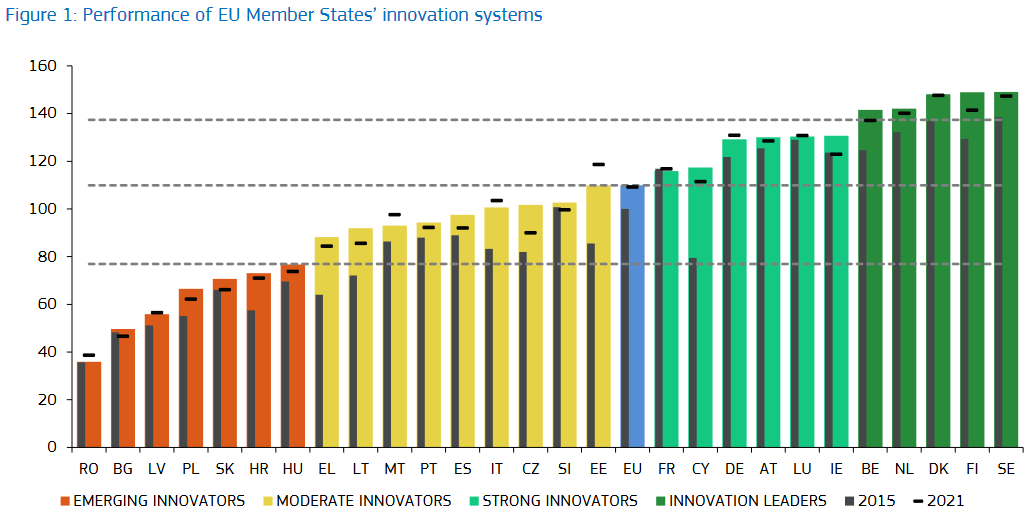룩셈부르크, 여전한 혁신 강국
룩셈부르크는 2022년 유럽혁신스코어보드(European Innovation Scoreboard)에서 EU 국가 중 7번째로 우수한 성과를 거둔 EU 국가로 남아 있으며, 매력적인 연구 시스템 분야에서 크게 두드러진다.
Sweden continues to be the best innovation performer in the EU, according to the new edition of the European Innovation Scoreboard published on 22 September 2022. The study reveals that 19 EU member states have improved their performance since last year. Global competitors such as Australia, Canada, Republic of Korea, and the United States still perform better than the EU average, but the EU has closed its performance gap with these countries and has surpassed Japan since 2021.
Luxembourg 7th in the European Innovation Scoreboard
Four other countries join Sweden in the top category of innovation leaders with a performance above 125% of the EU average: Finland, Denmark, the Netherlands and Belgium. Luxembourg, together with Ireland, Austria, Germany, Cyprus and France, falls into the next category of strong innovators with a performance between 100% and 125% of the EU average.

Attractive research systems
The overall ranking of the European Innovation Scoreboard is based on several categories. Luxembourg continues its excellent performance in the “attractive research system” category, with an index of 221.1 compared to the EU average and an increase of 19.1 percentage points compared to 2021. This performance is fuelled, in particular, by the subcategories “foreign doctoral students” (326.6) and “international scientific co-publications” (247.8). The country scores 148.0 in the third subsection, “most cited publications”.
With an index of 188.7, Luxembourg also stands out in the “linkages” category, due in particular to its exceptionally high public-private co-publications (411.1). The country improves its performance in this category with 22.5 percentage points compared to 2021.
Other strong categories include “human resources” (166.7), “use of information technologies” (151.1) and “employment impacts” (135.1). However, for these categories, Luxembourg’s performance lead over the EU average is smaller than or the same as the previous year.

